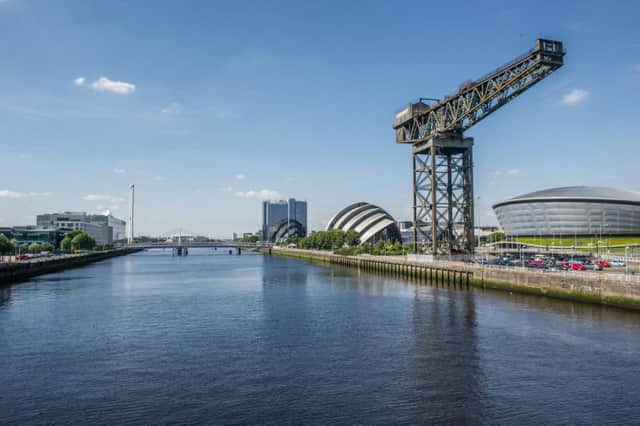When will river traffic return to the forgotten Clyde? - Alastair Dalton


Widened and deepened to enable large ships to reach Glasgow, it is now a largely unused maritime motorway.
While other cities’ civic and leisure focus has been on their river, it is often said that Glasgow turned its back on the Clyde - or at least held it at arm’s length.
Advertisement
Hide AdAdvertisement
Hide AdThere have been short-lived river buses between the city centre and the Braehead shopping centre, and plans for fast ferries and even hovercraft down the Clyde.
They have been succeeded by some power boat trips, but these are necessarily limited in capacity. There have been ambitious plans to expand these, even a service to bring passengers to and from Glasgow Airport.
The dearth of activity on the river has been brought into sharp focus by the Waverley paddle steamer being forced to cancel all its sailings this year because of the unexpected need to replace its boilers five years early - and the need to find the money for that.
Ironically, pretty much the only way to travel the Clyde is virtually - seeing it from the window of a train, bus or car on the parallel rail lines and roads either side of the river.
That’s a big loss because the Clyde offers a unique and dramatic perspective, both upstream into the city centre and downstream towards the Inverclyde coast and Argyll.
It is not as if recent major riverside developments haven’t offered the potential to trigger more traffic, from the SEC entertainment complex, Glasgow Science Centre and Riverside Museum.
The number of new bridges won’t have helped, although they have encouraged more people to the river, such as by using the Squiggly (Tradeston) Bridge, accompanying the revitalised Broomielaw waterfront in the city centre.
The building of another crossing, the Squinty Bridge or Clyde Arc, forced Waverley to relocate westwards beside the science centre.
Advertisement
Hide AdAdvertisement
Hide AdAnother bridge is planned that will link the Riverside Museum with Govan.
Glasgow City Council now has a well-established series of floating landing stages along the river, but these are still largely used by the occasional visiting vessel rather than boats offering people the chance to explore the Clyde from the water.
Some say the competing interests of different organisations have hampered the growth of river traffic, and an overall vision has been lacking, replaced by piecemeal projects.
I’ve even heard it said that the city wants to turn its back on its shipbuilding past, synonymous with the river, despite two remaining yards in Govan and Scotstoun being still active.
But perhaps the latest round of developments taking shape over several sections of the river will finally show the worth of connecting everything up.
There’s a new leisure complex to take shape just downstream from the Riverside Museum, on the opposite bank of the River Kelvin, including outlet shops - and perhaps some bars and restaurants with river views.
Further expansion of the SEC is also planned to build on the success of its Hydro arena centrepiece, while in the city centre there are to be riverside hotels at Custom House Quay, close to Central Station.
Promoters of these new developments say their aim is to make Glasgow “a city on the river, not by the river”. Let’s see if that marketing slogan will succeed where past hopes have failed.